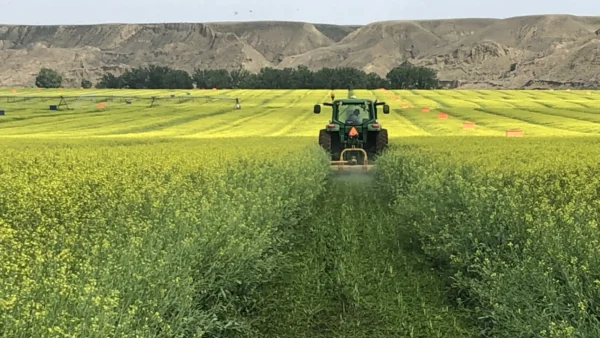As individuals, we have a natural tendency to resist change. Change is often met with even more resistance at the business and organizational levels. While change means entering unfamiliar territory, it also means new opportunities and that can drive growth and innovation.
As an industry, there’s no question that we’ve been going through a period of change. One that has brought with it many questions is the changing wheat classification, formally known as the Canadian wheat class modernization.
In the first part of 2015, the Canadian Grain Commission held a consultation period about the need to “modernize” Canada’s wheat class system, and reached out to grain handlers, processors, marketers, developers, producers and end-use customers. The goal of the CGC is to “maintain quality and enhance the consistency of Canadian wheat classes to support marketability.”
As someone who works directly with end users to determine new opportunities for specific varieties, I welcomed this review and anxiously anticipated their recommended changes. Through the years, seed companies and plant breeders have been working to bring new varieties forward, and not all fall within the traditional parameters. Some varieties bring different qualities to the table and serve a different purpose.
We’ve been operating with 10 wheat classes in western Canada and in recent years, concerns have been brought forward about the variability in quality needed for milling performance, dough strength, protein quality and end-product quality in the Canada Western Red Spring (CWRS) class.
To address those concerns, new check varieties have been set to ensure greater predictability and uniformity in the variety registration process, while guaranteeing greater consistency within the CWRS class. The new check varieties are Glenn, Carberry, Teal and AAC Viewfield for the Central and Western Trials. Splendor has been kept as a mid-level check variety for the Parkland Trials, and Glenn, PT772 and PT472 have been added.
Essentially, these changes raise the floor, or lower requirement, for gluten strength. From these new parameters, 25 varieties of CWRS were designated to transition to the new Canada Northern Hard Red wheat class, as they do not meet the revised quality parameters. The original effective date was Aug. 1, 2017, but that has been pushed back to Aug. 1, 2018, due to stakeholder concerns about the length of the transition period.
It’s possible that these changes might not seem favourable to your company if you own one of the varieties that is designated to move. However, if you look at the bigger picture for the Canadian wheat and cereal industry as a whole, you can’t put a price tag on being able to guarantee high-quality grain for a specific end-use. It’s better for our domestic customers as well as international markets and will only ensure that we keep customers coming back to Canada for high quality wheat.












